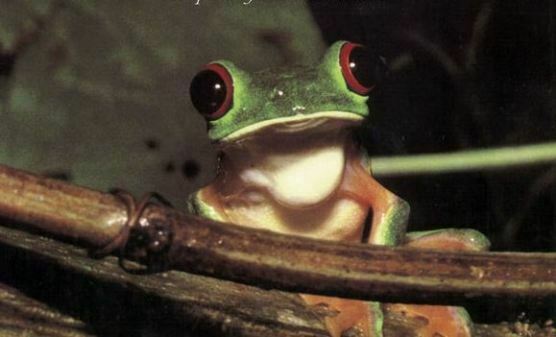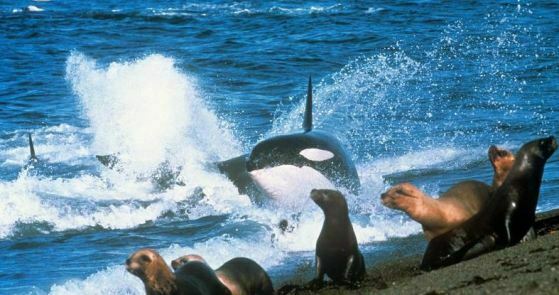
The latest natural history series narrated by Sir David Attenborough, Blue Planet II, is being broadcast in the UK. As with so much else of the work associated with him, it has been given a rapturous reception by viewers and reviewers alike. This, they say, is the best of television. This is why we don’t complain as much as we might otherwise do about paying for a TV licence. This is astonishing.
But I beg to differ.
The first thing to say is that David Attenborough is a great man. In a mean and difficult age he has stood out for decades as a beacon of decency, reason and intelligence. He is a figure who has graced the age because he is a product of the age, being a broadcaster (in every sense) whose understanding of the television medium has given him a voice that could not have existed at any other time.
Attenborough has been making natural history films since the 1950s, alongside writing, lecturing and occasionally running parts of the BBC. The turning point in his career was the series Life on Earth, broadcast in 1979. This outstanding work was the On the Origin of Species for our times. It traced the varieties of life, broadly arranged in order of evolutionary history, from sea-living invertebrates, to insects, fish, land creatures, birds, mammals and finally humans, ‘the compulsive communicators’ as the thirteenth and final episode put it.
The series gained acclaim for the quality of its cinematography, the boldness of its ideas (most famously the sequence in which Attenborough communed with gorillas), its innovative music (by Edward Williams) and the cohesiveness of its ideas. It was one of a series of grand television series made at that time, in which a wise Western figure gave a view of history and achievement over multiple episodes, including Kenneth Clark’s Civilisation, Joseph Bronowski’s The Ascent of Man and Carl Sagan’s Cosmos. But Life on Earth trumped all of these through its modesty. It was not a pronouncement on how things should be seen; it was observation of a world in which we were significant only in that we were the observers.

Life of Earth was accompanied by a book that was its equal. Indeed it may be one of the great books of the twentieth century. Divided into thirteen chapters that follow the thirteen episodes of the series, with the two frequently sharing the same language, it is nevertheless an exceptional work in its own right. It has the mission of explaining the world of understanding opened up by Darwin, after 120 years of corroborative investigation. Its exceptionalism lies in the clarity of its argument and the facility of its writing style. Here is one paragraph, selected at random, as illustration:
When the first amphibians appeared, there was, of course, one comparatively safe place for their eggs and young – the land. At that time no other vertebrates were there to steal eggs and gulp the larvae, no risks comparable to those threatened in the water by shoals of hungry fish. If the amphibians could manage to deposit their eggs out of water, their young would certainly have greatly increased chances of survival. But there were problems. How could the eggs be prevented from drying out and how could tadpoles develop out of water? Whether ancient amphibians overcame these difficulties we do not know. Had they done so they would certainly have greatly accelerated the rate at which they colonised the land. Today the attraction of the land for breeding is not so great, for the amphibians no longer have it to themselves. There are reptiles, birds and even mammals that relish amphibians eggs and tadpoles. Nonetheless, many frogs and toads still find it advantageous to follow this strategy.
This is a model of good style. It is clear, unpretentious, precise in its choice of word and phrasing, using words with particular resonance (gulp, relish) sparingly but effectively. It is a pleasure to read, equally to listen to (it is impossible to read Attenborough’s prose without imagining his melodious voice narrating it). But more than this, there is the propulsion of the argument, based around the strategies for survival that are fundamental to Darwin’s theory. The paragraph leads us in the space of a few lines from ancient to present times. It is also compellingly visual, each sentence a cut from one view to a complementary view.
Life on Earth was followed in 1984 by a sequel The Living Planet, which if anything was the greater work, televisually. Arranged geographically rather than through time, it surveyed the ways in which living organisms adapted to the conditions of their surroundings, from ice caps, to jungles, to deserts. Perhaps the most memorable sequence, in which Attenborough winched himself up the different levels of a tropical rainforest, was also one which exemplified how visual style married argument. This was a series that foregrounded visual evidence, and made the television medium the tool for discovery.
Both series pushed back the boundaries of how natural history was filmed. Cameras were placed where cameras had never previously been placed, and again and again we were shown sequences where we were told that such scenes had never been seen before. The pursuit of evidence led to a thirst for astonishment. And so the seeds of doubt were sown.

It is unlikely that anyone considered Life of Earth to be the first in a trilogy, but overseas sales of the programmes demanded more of the same, and if The Living Planet served as a natural complement to the first series, The Trials of Life (1990) was a follow-up encouraged by BBC Worldwide’s marketing department. The theme of the series was the different ways in which animal species live, tracing their trials from birth to death. It was here that sensation began to take over. Maybe it was the sequence in which killer whales attacked sea lion pups on the shoes that marked the turning point. This was sensation for sensation’s sake, a televisual thrill that existed of itself, irrespective of and indeed ultimately irrelevant to the argument that ostensibly it illustrated.
In film studies terms, The Trials of Life is a series of attractions. They are spectacles designed to excite the viewer’s curiosity. They exist in isolation. They defeat, and are the antithesis of argument. As Tom Gunning argues, in a famous 1986 essay on ‘The Cinema of Attractions’ as a defining feature of early cinema, it is “a conception that sees cinema less as a way of telling stories than as a way of a series of views to an audience, fascinating because of their illusory power … and exoticism”. And so it has been with the successor series Life in the Freezer (1993), The Blue Planet (2001), Planet Earth (2006) and their sequels, that we are presented with a sequence exotic thrills – usually bloody thrills, exploiting tension and terror – that say nothing beyond themselves.

It is not that these later series are totally devoid of an argument. Each stresses the essentials of survival that underpinned the first two series, while environmental concerns are repeatedly expressed. But as Attenborough has aged, and now serves chiefly as figurehead and voice, so such messages have become homilies, additional to rather than integral to what we are being shown. Attenborough writes in Life on Earth:
The fact is that no species has ever had such wholesale control over everything on earth, living or dead, as we now have. That lays upon us, whether we like it or not, an awesome responsibility. In our hands now lies not only our own future, but that of all other living creatures with whom we share the earth.
This has been the governing theme of all his best work. It is how he has taken on the baton from Darwin, developing the argument from understanding to responsibility. And undoubtedly the later ‘Planet’ series communicate a combination of awe and urgency that speak powerfully to millions of us. But I look on Blue Planet II, and I do not recognise any of it. It is not the world in which I live. It is some other world, impossibly beautiful, riven through by the remarkable, that exists on HD screens but at a profound remove from the reality to which I feel I belong.
Life on Earth and The Living Planet opened our eyes to our place in time and space. They were evolutionary in intent, and revolutionary in effect. Now ingenuity of camera technique, combined with a desire for shock (the shock of astonishment, not just the shock of violence), has produced memorable television but increasingly poor argument. And the life exists in the argument.
How true! A diligent record of Attenborough’s real achievements – or were they his producers’? The problems is indeed that natural history has fallen prey to the ‘television of spectacle’. It may reach the masses, and enrich BBC Ents, but has decreasingly less to do with the kind of everyday natural world that we know.